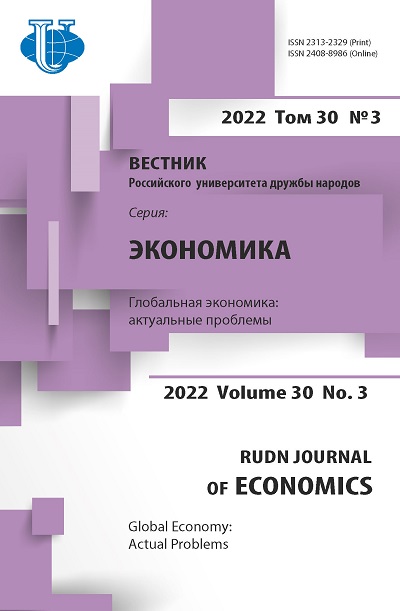Formation a methodology of integral assessment for regional economic entities’ level of financial stability
- Authors: Mitrofanov E.P.1, Kulagina A.G.2, Antipova T.V.3, Solodova E.A.1
-
Affiliations:
- Moscow State University of Humanities and Economics
- Chuvash State University named after I.N. Ulyanov
- Moscow Aviation Institute (National Research University)
- Issue: Vol 30, No 3 (2022): Global Economy: Actual Problems
- Pages: 383-401
- Section: REGIONAL ECONOMY
- URL: https://journals.rudn.ru/economics/article/view/32151
- DOI: https://doi.org/10.22363/2313-2329-2022-30-3-383-401
Cite item















